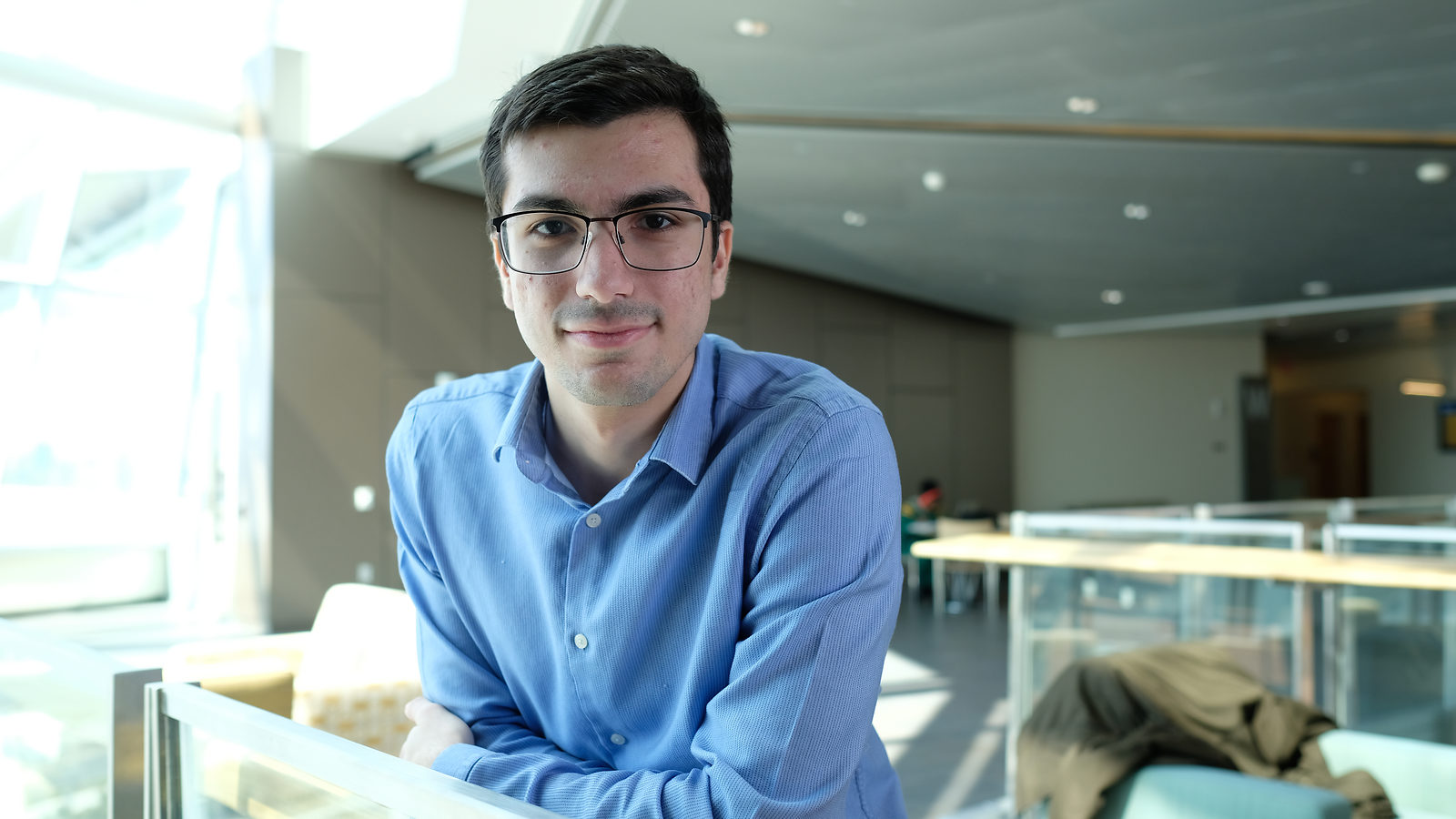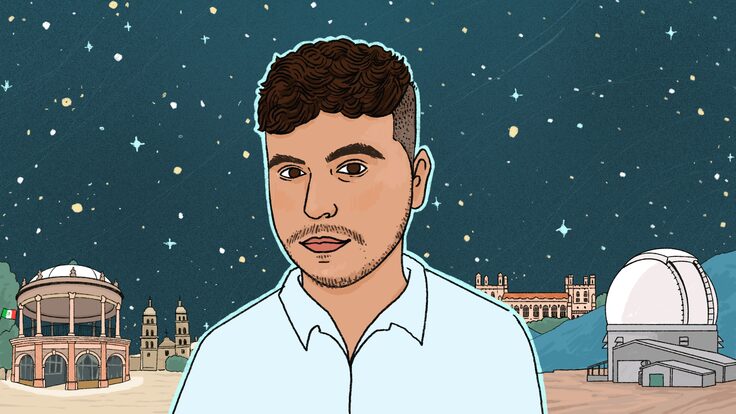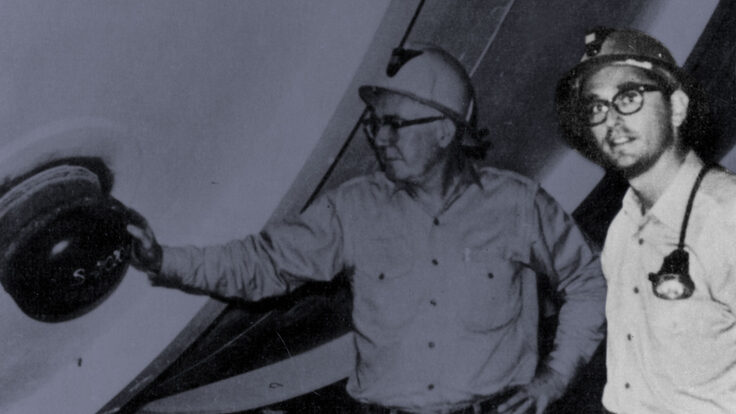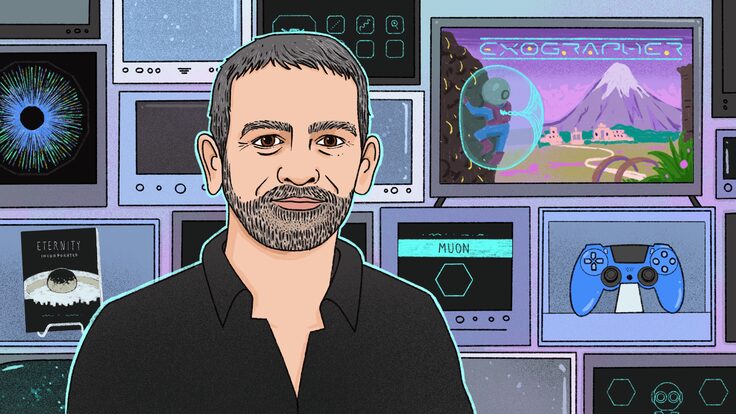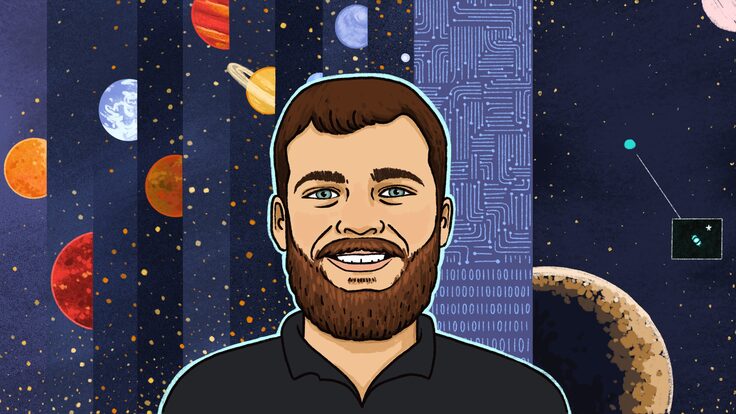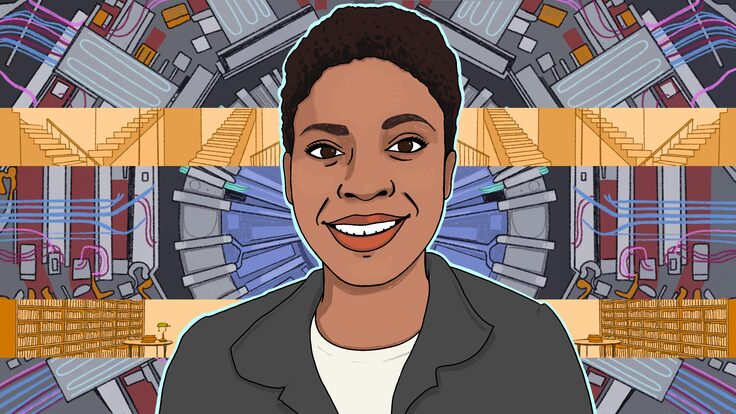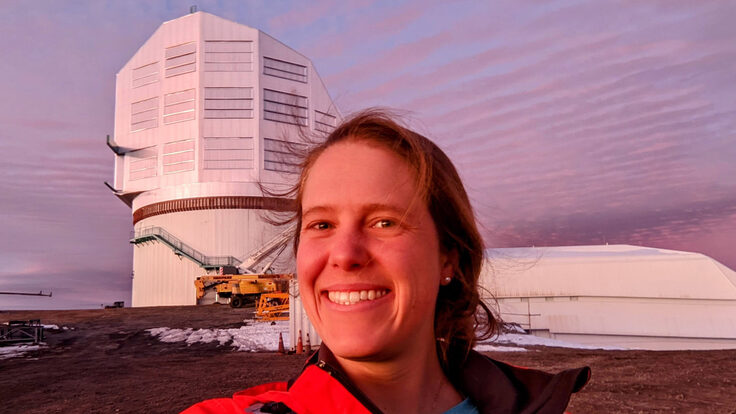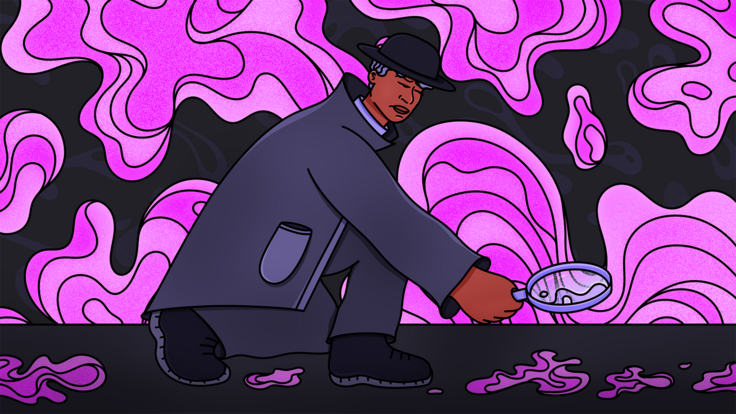The silver Mustang was fishtailing, its back wheels losing traction and spinning out on the wet pavement of the New England Dragway.
On a cold and damp October night at the quarter-mile racetrack in the small town of Epping, New Hampshire, Joseph Farah was careening at over 100 miles per hour when he lost control of the car.
Suddenly, all became clear.
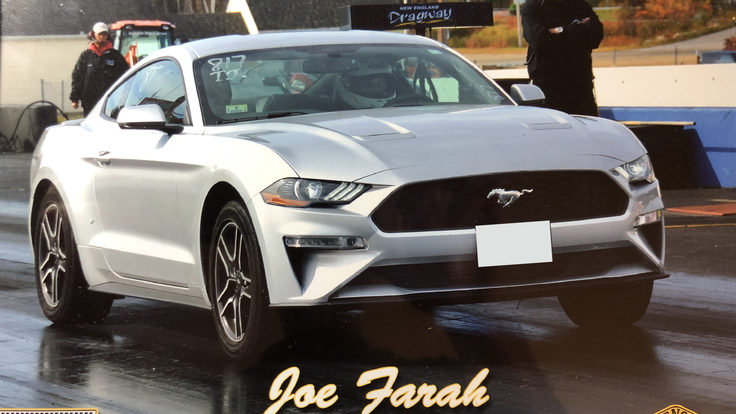
Farah races his Mustang on the New England Dragway
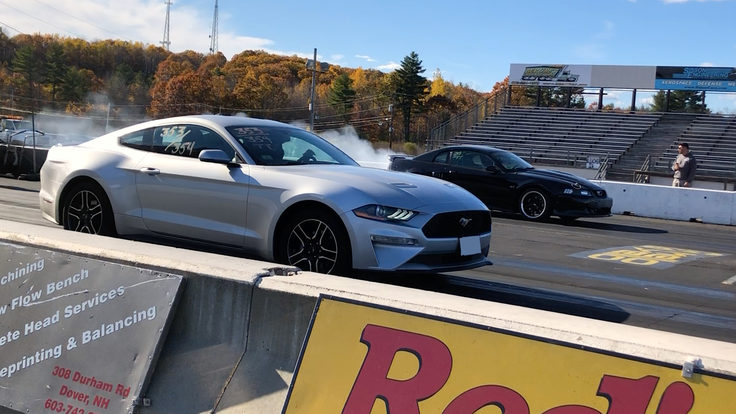
Farah races his Mustang on the New England Dragway
Racing at the center of the universe
For several days Farah had been wracking his brain about the technicalities of how dark shadows form at the middle of black holes. The project was the culmination of his first deep dive into black hole theory and involved quite a bit of complex thinking.
It was there at the “center of the universe” (how citizens of Epping fondly refer to their town at the crossroads of highway routes 101 and 125) that epiphany struck.
“Traveling so quickly forward while feeling the back end of the car swinging out wide gave me a blast of intuition and gave me an idea about how the phenomenon I was studying connected to my mathematical approximation,” Farah says.
Giddy from excitement, he used the time slip he received post-race to sketch out his idea. His insight ultimately led to a promising result that he hopes will soon be published in an academic journal.
Farah is still an undergraduate, studying physics and math at the University of Massachusetts-Boston. He is the first and only undergraduate thus far to receive junior collaborator status on the consortium for the Event Horizon Telescope, a collection of telescopes all around the world whose primary goal is taking the first pictures of black holes.
In his nearly two years with the team, he has developed computer libraries for data analysis and modeling, made movies of black holes and assisted with weather prediction, among other things.
Farah’s current project, understanding the intricacies of dark shadow formation at the middle of black holes, could result in his seventh publication as a member of the EHT. For the first time he is leading a study, a challenge he says he welcomes.
“I love thinking about problems and about what a result means on a fundamental level. I love the discovery stage—just the idea of knowing something that nobody else does or trying to find an answer to a question that nobody has maybe even asked,” Farah says.
One door closes, another opens
“What made Joe?” asks Michael Wadness, Farah’s high school physics teacher. “He’s just enthusiastic and motivated and is always asking questions. He’s amazing because he wants to do physics.”
At a young age, Farah could be found immersed in the latest NOVA program or Michio Kaku book. He knew that he wanted to study outer space and physics by middle school, and in high school he took advantage of all the clubs and science fairs he could.
During his sophomore year of high school, one of his science fair projects caught the eye of Karen O’Hagan, an outreach coordinator at Tufts University. O’Hagan introduced him to Anna Sajina, whom he calls “an astrophysics researcher who changed my life.”
Even though he was just a sophomore, Sajina let Farah work in her lab at Tufts University for a couple of weeks, an experience that he says taught him a lot—and snapped him out of a mentality that was holding him back.
“Before working with her, I had this ridiculous idea from studying for standardized tests that if you come up with a question that isn’t answered by the textbook, then it’s the wrong question,” Farah says. “But that’s not how science works. In science, you’re trying to come up with questions that can’t be answered by the text.”
Soon after, Wadness introduced him to the activities of large research collaborations through the international education and outreach program QuarkNet. Everything from building equipment to detect cosmic rays, which hurtle through outer space before colliding with the Earth’s atmosphere and spraying a shower of particles, to practicing for a master class where attendees worked with Large Hadron Collider data prepared Farah for what he was about to do.
In 2017, Farah enrolled at the University of Massachusetts-Boston, 10 miles from his hometown. He immediately joined a research group working on new detectors to integrate into the ATLAS experiment at the Large Hadron Collider, drawing on his experiences at Tufts and QuarkNet to contribute to the project.
Farah recalls that as the project wrapped up, some students graduated and others went to work on ATLAS at CERN in Switzerland, while he as a mere undergraduate had nowhere to go. That’s when his supervisor, physicist Melissa Franklin, approached him about an opportunity to work with a research group doing radio astronomy and black hole physics: the Event Horizon Telescope Consortium.
Once in a lifetime experiences for a regular Joe
Readers attuned to recent major discoveries will have figured out that Farah was working on EHT when the collaboration released their blockbuster first image of a black hole in April 2019. Farah helped produce the image, and with the rest of the collaboration had kept that news a secret for nearly a year.
For the discovery, the EHT was honored with the Breakthrough Prize in Fundamental Physics. As one of the nearly 350 laureates evenly splitting the $3 million prize, Farah plans to pay off the rest of his Mustang and invest the rest of his winnings.
“Joseph has brought an endless stream of new ideas and fresh perspective and energy to the collaboration that only students bring,” says Michael Johnson, Farah’s supervisor for his EHT research and an astrophysicist at the Harvard-Smithsonian Center for Astrophysics. “He’s really gotten to know the difficulties and depth of the project. He’s truly deserving of his junior collaborator status.”
Farah downplays his role—“I think everyone in the collaboration wears many hats,” he says.
He says he is focusing on his next steps: finishing the semester, graduating college, getting into graduate school, and working on his drag racing and award-winning 3D art designs.
“What I would say to people is, reach out to anyone you want to work with. The best thing that can happen is you get to work with them; the worst thing that can happen is you’re on their radar,” Farah says. “Take the initiative. Be fearless.”
Back at the New England Dragway, Farah recovered from the fishtail and, almost predictably, won the race.



